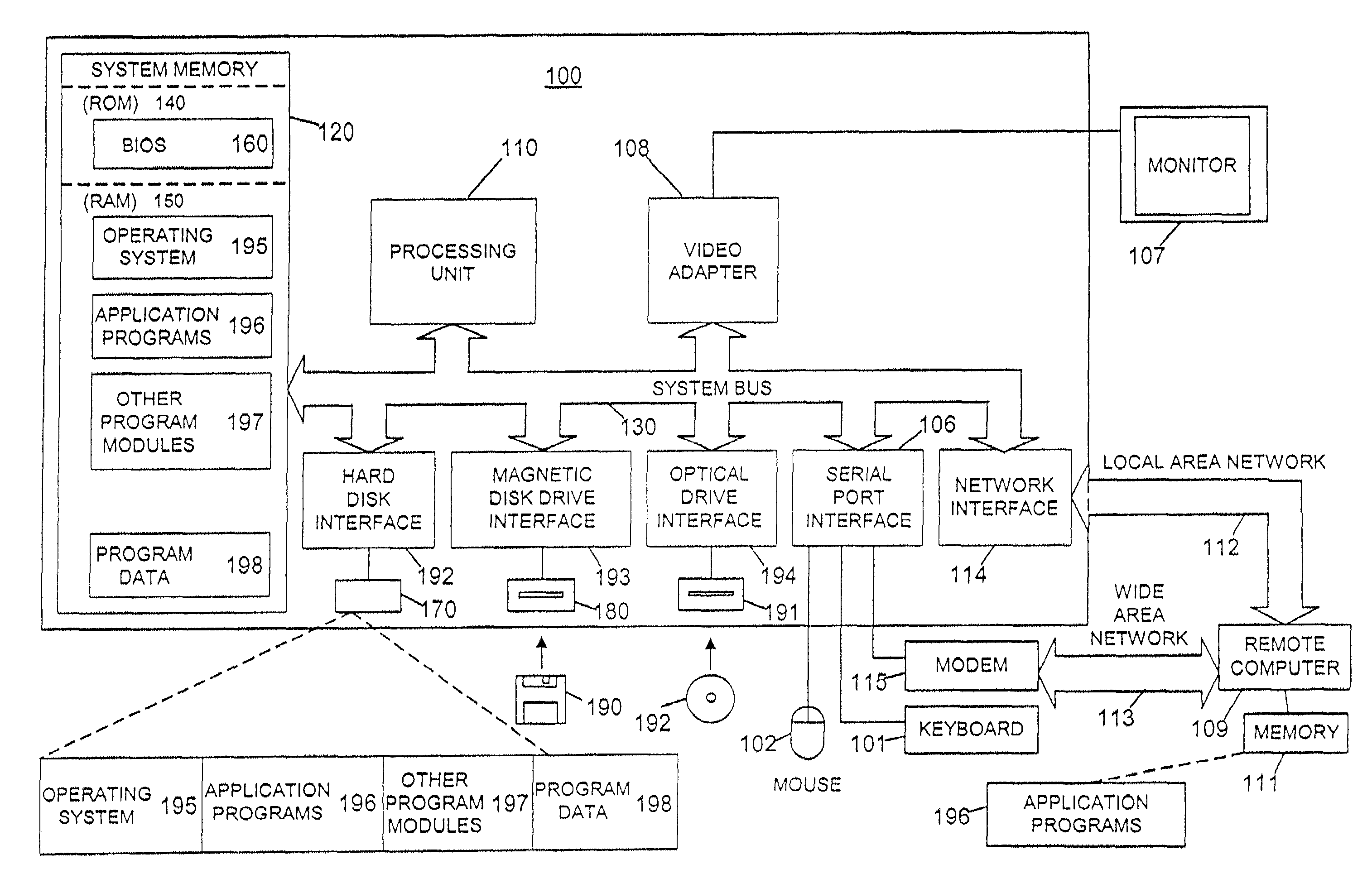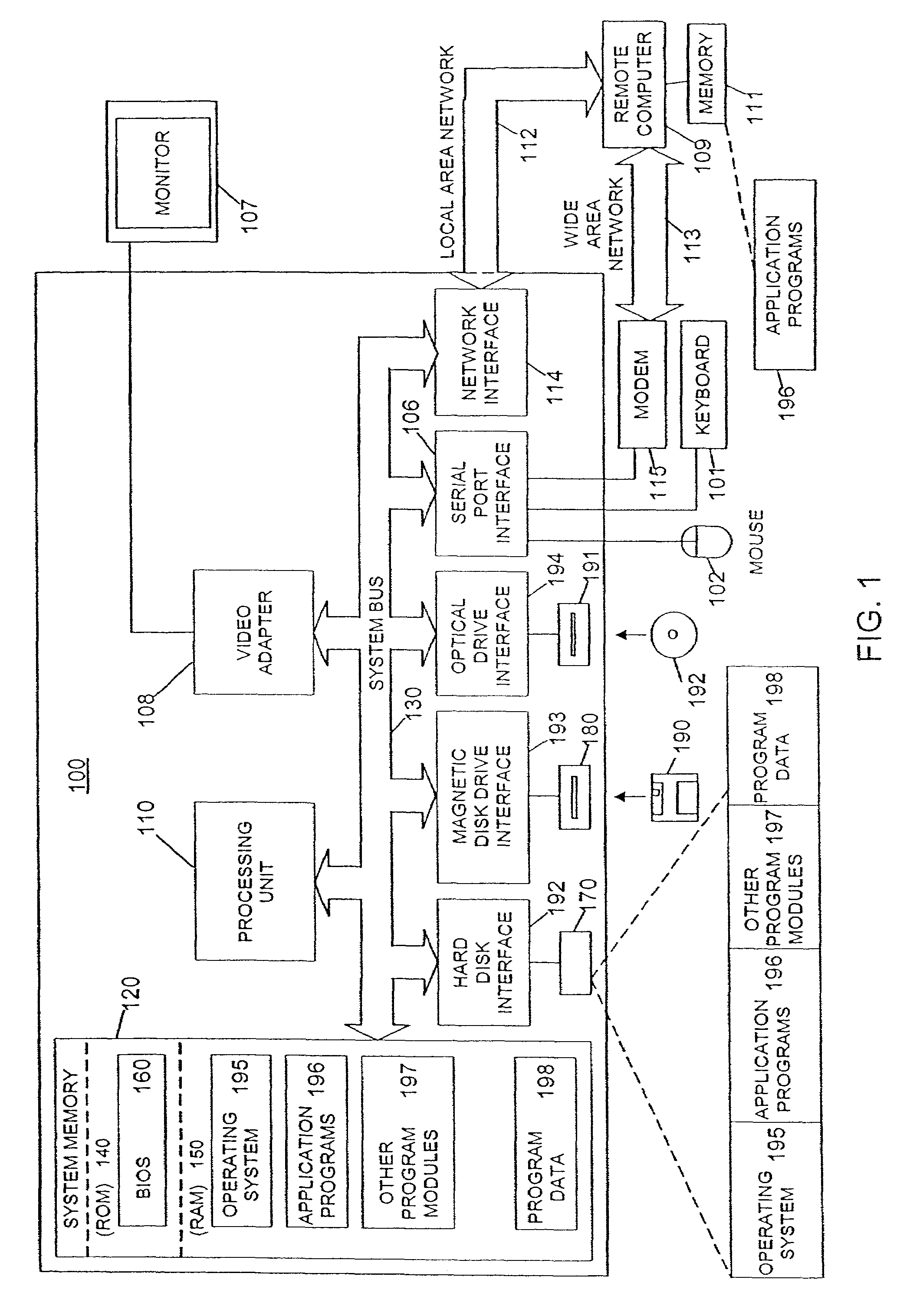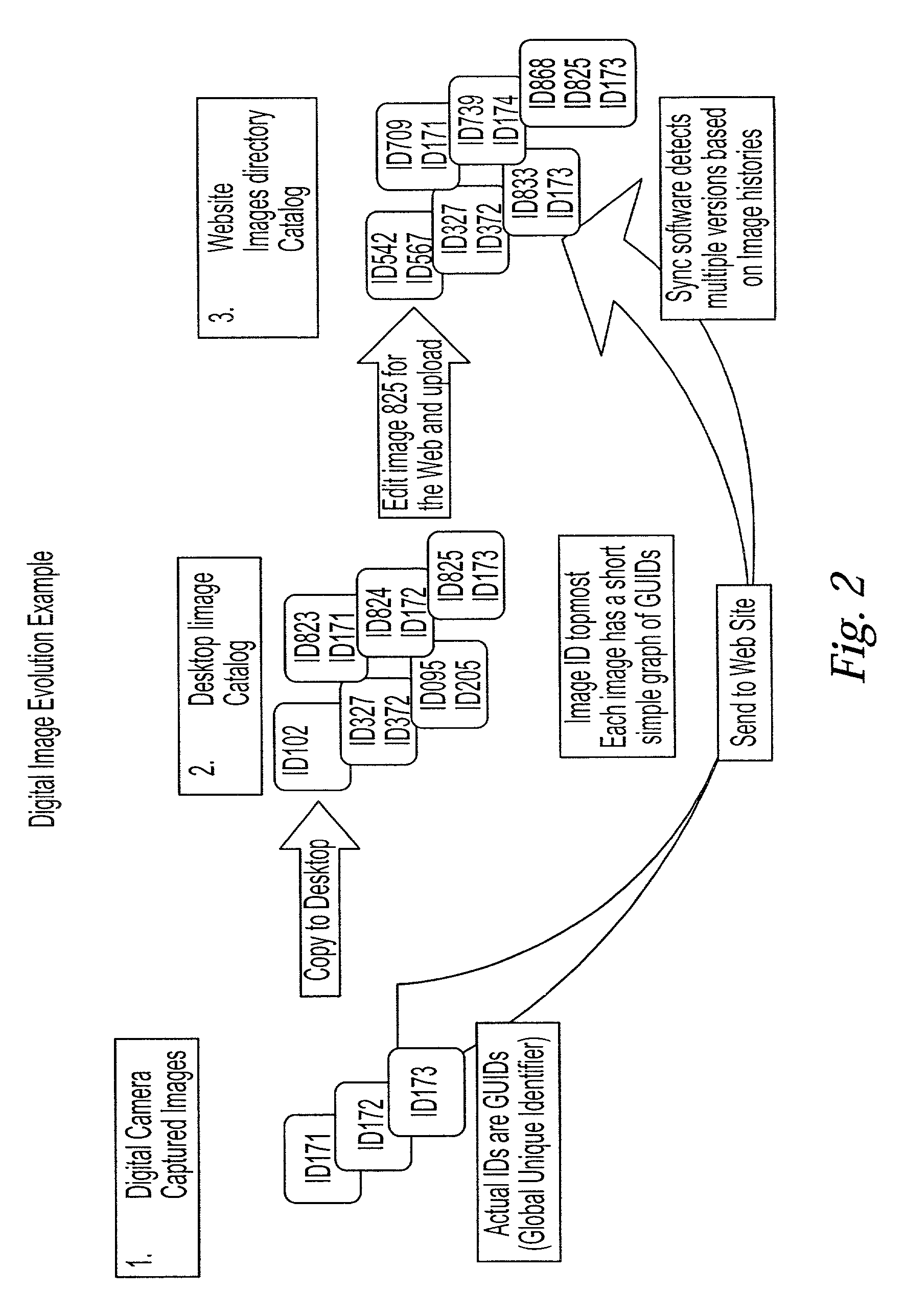Method and apparatus for synchronizing multiple versions of digital data
a technology of digital data and synchronization, applied in the field of synchronizing multiple versions of multimedia objects, can solve the problems of multiple duplicates of the same object, virtually impossible tasks for users, and difficult to remember or track how images relate to each other, so as to facilitate tracking the path of objects
- Summary
- Abstract
- Description
- Claims
- Application Information
AI Technical Summary
Benefits of technology
Problems solved by technology
Method used
Image
Examples
Embodiment Construction
[0016]In order to facilitate the description of the present invention, the invention will be described with respect to the particular example of synchronizing images. The present invention, however, is not limited to any particular multimedia object or limited by the examples described herein. Therefore, the description of the embodiment that follows is for purposes of illustration and not limitation.
[0017]FIG. 1 illustrates an example of a suitable computing system environment 100 on which the invention may be implemented. The computing system environment 100 is only one example of a suitable computing environment and is not intended to suggest any limitation as to the scope of use or functionality of the invention. Neither should the computing environment 100 be interpreted as having any dependency or requirement relating to any one or combination of components illustrated in the exemplary operating environment 100.
[0018]The invention is operational with numerous other general pur...
PUM
 Login to View More
Login to View More Abstract
Description
Claims
Application Information
 Login to View More
Login to View More - R&D
- Intellectual Property
- Life Sciences
- Materials
- Tech Scout
- Unparalleled Data Quality
- Higher Quality Content
- 60% Fewer Hallucinations
Browse by: Latest US Patents, China's latest patents, Technical Efficacy Thesaurus, Application Domain, Technology Topic, Popular Technical Reports.
© 2025 PatSnap. All rights reserved.Legal|Privacy policy|Modern Slavery Act Transparency Statement|Sitemap|About US| Contact US: help@patsnap.com



